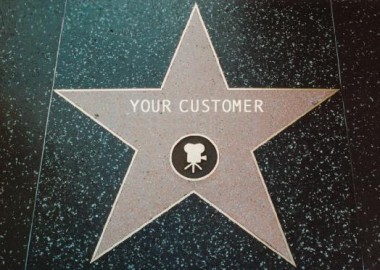
Even the toughest of us has been known to have watery eyes at the happy end of a cheesy rom-com, or as the credits rolled (and our tears did, too) on the heart-wrenching Holocaust film “Life is Beautiful.” But when it comes to our emotional reactions to commercials, we’re a little more sheepish. Yet despite knowing that we’re being manipulated into purchasing something, we can still feel a deep internal stirring when watching a well-done ad.
Whether we agree to it or not, the emotional centres of our brains are making decisions for us. We may wish to think we’re making buying decisions based on logic and fact, but actually, we’re much more likely to rely on how we feel about something than whether it makes logical sense.
The trend in recent years has been emotionally charged mini-narratives … that pull at our heart strings.
Businesses and advertisers have picked up on this psychological phenomenon. The trend in recent years has been emotionally charged mini-narratives, cinematic in their production and definitely share-worthy, that pull at our heart strings and endear us to not only the characters on the screen but also – and this is the end goal, of course – the company behind the product or service on offer.
The best and latest of these are by companies and brands who get that this emotionally resonant advertising is hugely effective in selling a product or service.
Purina – Pure Puppy Love
Take 2015’s Puppyhood by Purina and Buzzfeed. Here they play with the well-worn trope of the hopeless bachelor, but instead of having to navigate the start of a romantic relationship, he’s negotiating the joys and pitfalls of bringing a new puppy into his life and home. It’s adorable, endearing and successful in showing that puppies need particular things: love and understanding, no doubt, but also specially designed puppy food.
WestJet – Granting Real Wishes
In the spirit of the current holiday season, WestJet’s Christmas Miracle evolves the idea of the flash mob and “Secret Santa” and shows how generous and thoughtful the company is by using real employees to grant the Christmas wishes of real WestJet customers. Sure, some viewers may think: “If I book with WestJet, I too could be on the receiving end of these Christmas gifts.” But more likely, viewers are impressed with the company’s generosity to the ad’s particular cast of travellers and that alone could have a strong influence on who they decide to book with for their next flight. It’s successful in driving home their brand message, which is that, at WestJet, you’re not just a seat number, you’re a person.
Quality Time With Cineplex
Cineplex continues its tradition of the seasonal story with A Balloon for Ben, highlighting the importance of spending time together, as a single father struggles to balance his work duties with looking after his son. Cineplex knows that in the age of Netflix and other streaming services, not to mention shorter attention spans, movie-going is a commitment. Rather than deny this, they’ve alluded to it directly in their tagline: “Make time for what you love,” reminding us that an evening at the movies is synonymous with quality time spent with family and friends.
https://www.youtube.com/watch?v=cyfQ020mI7s
The key behind all of this, of course, is the power of storytelling. In a few short minutes, advertisers have introduced characters to their audience, complete with backstories, struggles, goals and joys, who we become almost instantly invested in. We sympathize with them, we root for them, and without realizing it, we remember the company behind the successful ad.
The key behind all of this, of course, is the power of storytelling.
Whether endearing ourselves to the bachelor in Puppyhood, waiting for the looks and cries of gratitude from the gift-receiving travellers in the WestJet’s Christmas Miracle, or sympathizing with the little boy and his single father in A Balloon for Ben, we have become emotionally connected to characters who have only just entered our lives.
Crafting a story – whether it’s for your product, your service or your brand – is essential to drawing in your audience. These companies and brands get this. And so do we. It’s through the connectivity present in good storytelling that you become relatable and relevant to a potential customer. By appealing to your audience’s emotional side, you’re bringing them on board to your message, making them more willing and likely to listen, explore, and ultimately, stick around.
Need help with your next page-turning story? Get in touch.





